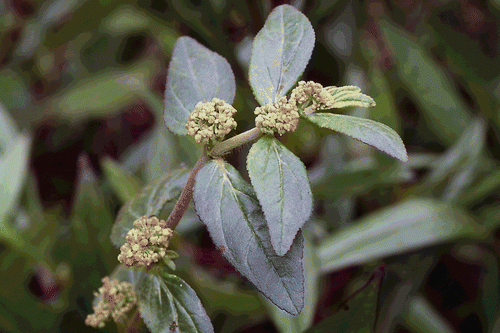© Thomas Brendler

Botanical name: Euphorbia hirta L., Euphorbiaceae
Main synonyms: Chamaesyce hirta (L.) Millsp.; Euphorbia pilulifera auct. non L., E. capitata Lam.
Description: Herb growing to about 20-30cm with more or less erect branches, spreading from near the base and bearing yellowish hairs. Plant has often reddish, with milky sap. Leaves opposite in pairs from slightly swollen nodes, ovate or rhomboid. Inflorescence about 1cm in diameter, of globose clusters of cyathia. Fruit a minute 3-seeded capsule.
Vernacular names: Malnommée, Euphorbe pilulifère (French), Hairy Spurge, Cat’s hair, Snakeweed, pill-bearing spurge, asthma herb.
Geographical distribution: Widespread throughout the African continent, and dispersed pantropically and sub-tropically around the world.
Chemical constituents: The plant is rich in diterpenes, triterpenes, taraxerol, friedelin, amyrins, cycloartenols, euphorbol hexocosonate and friedelan. The dermatogenic latex contains euphorbon.
Medicinal uses: Galactagogue. The plant is also reported to have diuretic and purgative actions. It is also regarded as an outstanding medication to treat respiratory system disorders, including asthma, bronchitis, hay fever, laryngeal spasms, emphysema, coughs and colds.
Pharmacology: The antispasmodic principle has been identified as shikimic acid while the contracting principle as Choline. The latter also stimulates histamine activity. Extracts are sedative and have anxiolytic properties. The hypoglycaemic activity of the plant and its antiprotozoal effect have been reported.
